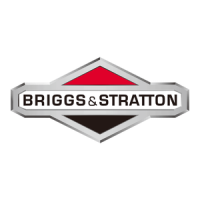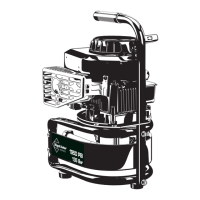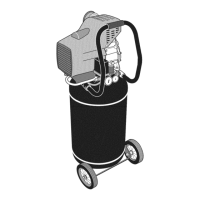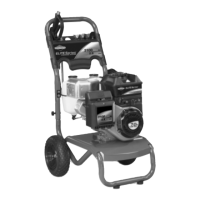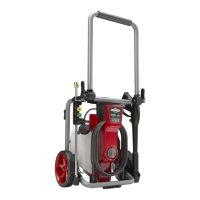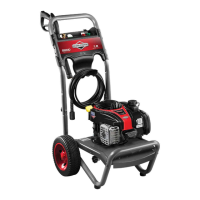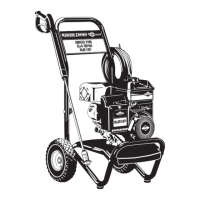19
3. Wash sediment cup, o-ring, and screen in a
nonammable solvent. Dry them thoroughly.
4. Place screen and o-ring into fuel valve. Install
sediment cup and tighten securely.
5. Move fuel valve to ON (I) position, and check for
leaks. Replace fuel valve if there is any leakage.
Pressure Washer Maintenance
Clean Debris
Daily or before use, clean accumulated debris from
pressure washer. Keep linkage, spring and controls
clean. Keep area around and behind muer free from
any combustible debris. Inspect cooling air slots and
openings on the pressure washer. These openings
must be kept clean and unobstructed.
Pressure washer parts should be kept clean to reduce
the risk of overheating and ignition of accumulated
debris.
• Use a damp cloth to wipe exterior surfaces clean.
NOTICE Improper treatment of pressure washer
could damage it and shorten its life.
• DO NOT insert any objects through cooling slots.
• Use a soft bristle brush to loosen caked on dirt,
oil, etc.
• Use a vacuum cleaner to pick up loose dirt and
debris.
Check and Clean Inlet Screen
Examine the screen on the pump’s water inlet. Clean
it if the screen is clogged or replace it if screen is
damaged.
Check High Pressure Hose
The high pressure hose can develop leaks from wear,
kinking, or abuse. Inspect the hose each time before
using them. Check for cuts, leaks, abrasions or bulging
of cover, damage or movement of couplings. If any of
these conditions exist, replace the hose immediately.
Check Detergent Siphoning Tube
Examine the detergent tank and detergent siphoning
tube and clean if clogged. The tube should t tightly on
the barbed tting of the pump and detergent shut-o
valve. Examine the tube for leaks or tears. Replace the
tank or tube if either is damaged.
Detergent Siphoning Check Ball
Occasionally check ball in detergent siphoning
system may become stuck from storage, dried soap,
or minerals in water. The check ball can be freed by
performing the following:
NOTICE Before performing this procedure, be sure
you are wearing safety goggles as described below.
1. Shut o engine and turn o water supply.
2. ALWAYS point spray gun in a safe direction,
press red button and squeeze spray gun trigger to
release retained high water pressure.
3. Remove detergent siphoning hose from barbed
tting on pump.
4. Using a rm, blunt object 7/64” in diameter or
smaller, by at least 1” long, such as an Allen
wrench, slowly insert the object into the barbed
tting until you meet resistance. This resistance is
the check ball.
A
B
C
WARNING The high pressure stream of water
that this equipment produces could cut
through skin and its underlying tissues,
resulting in serious injury and possible
amputation.
• NEVER repair high pressure hose. Replace it.
• Replacement hose rating MUST equal or exceed
maximum pressure rating of unit.
WARNING Risk of eye injury.
Spray could splash back or propel objects
resulting in serious injury.
• Always wear indirect vented (chemical splash) safety
goggles marked to comply with ANSI Z87.1 when using
or in vicinity of this equipment.
• NEVER substitute safety glasses or dry-condition
goggles for indirect vented safety goggles.
WARNING The high pressure stream of water
that this equipment produces could cut
through skin and its underlying tissues,
resulting in serious injury and possible
amputation.
Spray gun traps high water pressure, even when
engine is stopped and water is disconnected, which
could result in serious injury.
• Keep high pressure hose connected to pump and spray
gun while system is pressurized.
• ALWAYS point spray gun in safe direction, press red
button and squeeze spray gun trigger to release high
pressure, every time you stop engine.
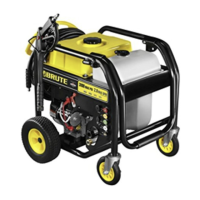
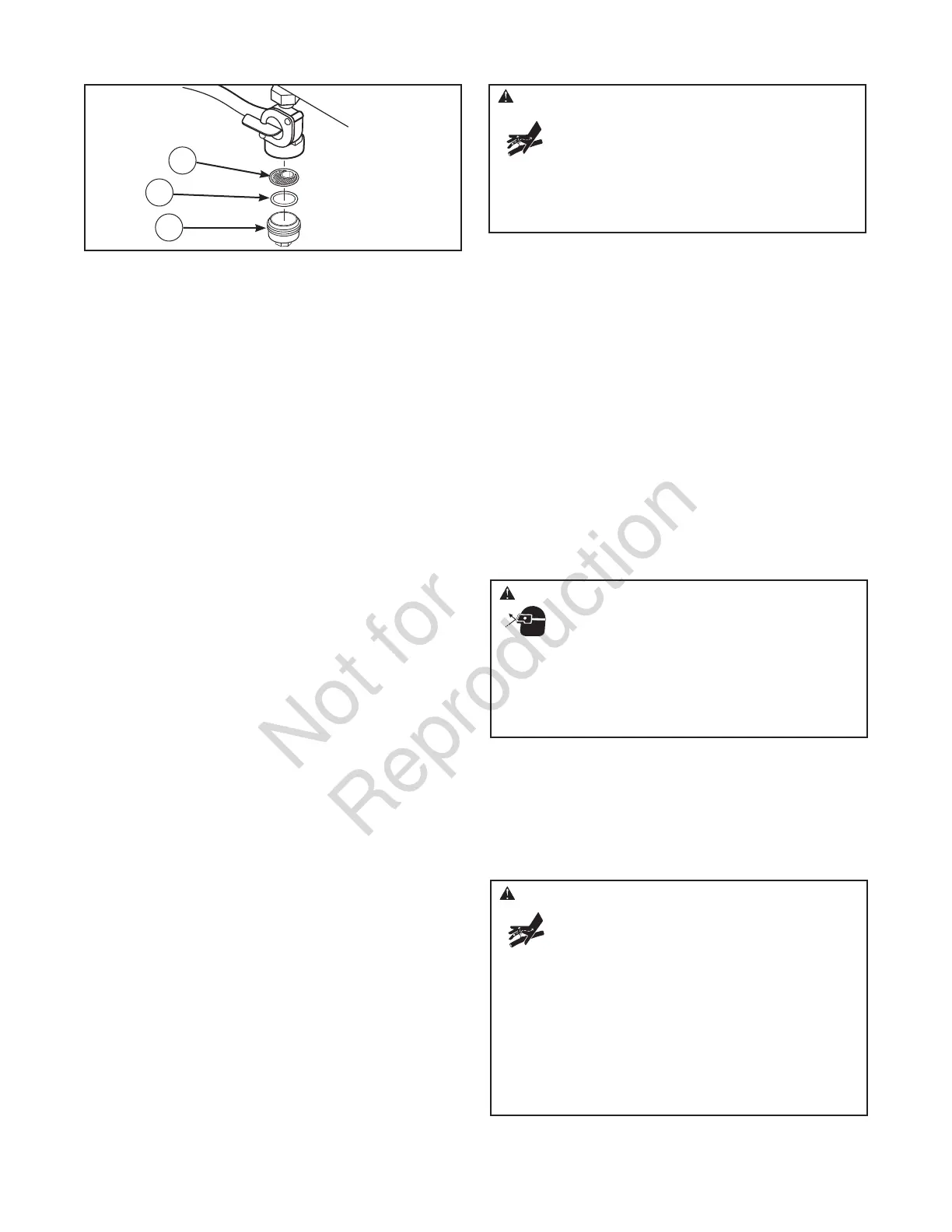